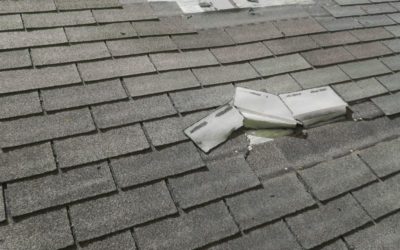Your roof works as a whole puzzle to protect your home from rain, wind and everything else in nature. Part of this puzzle is the drip edge which is installed on one of the most vulnerable sections of the roof, the edges.
It’s a simple yet essential addition that keeps water from getting into places it shouldn’t. A drip edge is a barrier that keeps water away from your home’s foundation and protects the edges of your roof from wear and tear.
Having one is important when dealing with heavy rain or melting snow to ensure that water is properly channeled. This reduces the risk of leaks and damage.
Why a Drip Edge Matters for Your Metal Roof
A metal roof is tough, but even the strongest roof can have weak spots, especially around the edges. This is where water and wind can compromise your roof and cause problems.
That’s why installing a drip edge is essential. The edges of your roof face constant exposure to water runoff, wind, and temperature changes.
1. Protects Your Roof From Water Damage
Water can damage a roof, especially if it isn’t properly directed. Without a drip edge, rainwater can seep underneath your roof’s edges.
This can lead to rotting wood, mold growth, or even leaks inside your home. The drip edge ensures that water flows directly into the gutters instead of pooling where it shouldn’t.
A drip edge also prevents ice from forming along your roofline in colder months. When water freezes, it expands and can lift shingles or panels, leaving your roof vulnerable.
2. Keeps Pests and Wind at Bay
Without a proper drip edge, the gaps along your roofline can become an entry point for pests like insects, birds, or small rodents. Once inside, they can cause significant damage to your attic or roof structure.
A drip edge closes off these gaps, making it harder for unwanted visitors to sneak in. Wind can also be a challenge for metal roofs.
Strong gusts can lift edges or loosen panels over time, especially if they aren’t secured. A drip edge helps hold everything in place, acting as a stabilizer for your roof’s edges.
Getting Ready for the Installation
Before you get started with installing a drip edge on your metal roof, it’s important to gather everything you need. This ensures the job goes smoothly and safely without mistakes.
Start by ensuring you have all the right tools and materials. Depending on your roof’s size and design, the type of drip edge you choose may vary.
1. Tools and Materials You’ll Need
At a minimum, you’ll need a few simple tools to complete the installation. Here’s a list of the essentials:
- Drip edge material: You can purchase drip edge strips specifically designed for metal roofs, typically made from aluminum or galvanized steel. Make sure you select the correct length and style that fits your roof’s dimensions.
- Measuring tape: Accurate measurements will ensure the drip edge fits properly along the edges of your roof.
- Tin snips or a metal cutting saw: These will be needed to cut the drip edge to the right size.
- Hammer or power drill: To secure the drip edge with nails or screws.
- Roofing nails or screws: Make sure you have the correct fasteners to attach the drip edge securely.
- Safety gear: Always wear gloves, a helmet, and non-slip shoes to avoid accidents while working on the roof.
Having everything on hand ensures you don’t waste time running back and forth looking for tools or materials. Plus, it allows you to focus on the installation itself without distractions.
2. Measuring and Choosing the Right Drip Edge
You’ll need to measure the length of the roofline where you plan to install the drip edge. Be precise, as the drip edge should fit snugly along the roof’s edges.
- When choosing a drip edge, consider the type of metal roofing you have. Some drip edges are designed specifically for standing seam roofs, while others work better with corrugated metal.
- The shape and design of the drip edge should match the slope and style of your roof for the best fit and functionality. Don’t forget to account for any corners or turns in the roofline, which may require special cutting or fitting.
- Once you have your measurements, it’s a good idea to purchase a little extra drip edge material just in case. It’s always easier to have more than to realize you’re short halfway through.
Preparing Your Roof for the Drip Edge
A clean, smooth surface will make the installation process go much more smoothly and help ensure the drip edge fits securely. If you’re installing a drip edge on a brand-new roof, this step will be easy, as there won’t be any buildup.
But if your roof has been in place for a while, it’s important to check for any damage or loose areas. You want the drip edge to sit flush against the roof, so any obstructions or uneven spots need to be addressed before installation.
1. Checking for Damage or Loose Areas
As you inspect your roof, keep an eye out for any signs of wear or damage. Look for areas where the roofing panels may be lifting or warped.
If you spot any loose or missing fasteners, be sure to tighten or replace them before proceeding. You should also check for rust or corrosion along the edges of your roof, especially if your metal panels have been exposed to the elements for a long time.
If there’s any rust, it’s important to treat those spots to avoid further damage. Use a wire brush or a rust remover to clean off any corrosion, and consider applying a protective coating.
2. Cleaning and Prepping the Roof Edges
Debris, such as leaves, dirt, or even old roofing materials, can get in the way of the drip edge installation. Using a broom or leaf blower, clear the roofline of any unwanted materials.
This ensures that the drip edge will make full contact with the roof, providing the best seal possible. If your roof has any old tar or roofing adhesive along the edges, it’s a good idea to scrape that off.
These residues can create a rough surface that makes it harder for the drip edge to attach securely. A clean roof will allow the drip edge to fit properly and help prevent any future issues with water management.
Step-by-Step Guide to Installing the Drip Edge
Working on your roof requires careful planning since it’s what keeps your home safe. WIth the right steps, it’s a manageable project.
1. Placing the Drip Edge Along the Roofline
Start by positioning the drip edge along the edge of your roof. You’ll want to make sure it overhangs the fascia board slightly to allow water to flow into the gutters without splashing onto the roof.
Begin at one corner of your roofline and slowly work your way across. The drip edge should lay flat against the roof, with the flange (the lip that extends underneath the roof) hanging just below the edge.
If the roofline isn’t perfectly straight, you may need to make small adjustments to keep the edge even. If your roof has any corners or turns, be sure to measure and cut the drip edge (tin snips) accordingly.
2. Securing the Drip Edge
You’ll need to fasten it with roofing nails or screws—whichever works best for your roof and the materials you’re using. Begin by placing nails or screws approximately 6 to 8 inches apart along the top edge of the drip edge.
The fasteners should hold the drip edge in place without puncturing or damaging the metal roofing panels. If you’re working with a longer section of the roof, you may need to overlap the sections on the drip edge.
When doing this, ensure the lower section overlaps the top so water flows smoothly over the joint. Misaligned drip edges could create gaps that let water in or lead to water pooling along your roof.
3. Cutting and Fitting the Drip Edge at Corners and Overlaps
When you reach corners or the end of a section of drip edge, you’ll need to make clean cuts to ensure a snug fit. For inside or outside corners, measure and cut the drip edge at a 45-degree angle so the edges meet neatly.
You may need to adjust the length of the drip edge at the ends to match the roofline and prevent water from running off into unwanted areas. If you’re working on a more complex roofline, you might encounter places where drip edge sections need to overlap.
When overlapping, make sure the top edge of the new piece fits neatly over the bottom edge of the existing piece. Use nails or screws to fasten both pieces securely, ensuring a strong seal that will hold up against wind and rain.
Tips for Adding a Drip Edge to an Existing Roof
Installing a drip edge on a brand-new roof is one thing, but what if you’re adding one to an existing metal roof? It’s still possible to enhance an old roof’s protection with a drip edge.
If you’re working on an older roof, inspect the edges and existing structures before you start.
1. How to Install a Drip Edge Without Removing Panels
One of the main concerns when adding a drip edge to an existing metal roof is how to install it without having to remove the roof panels. Luckily, this is entirely possible.
- The first step is to assess whether the drip edge can slide under the roofing panels or if it will need to be placed above them. In most cases, you can tuck the drip edge under the metal panels at the edges.
- If your panels are nailed or screwed tightly in place, you can lift them carefully (without disturbing the rest of the roof) to slip the drip edge underneath. Use a flat tool, like a pry bar, to gently lift the edge of the panel just enough to insert the drip edge.
For some roof designs, you may find it easier to simply position the drip edge above the panels and secure it in place along the fascia. This method will also work well if you’re dealing with a roofline that’s hard to access from below.
2. What to Watch Out For
When adding a drip edge to an existing roof, there are a few key things to keep in mind. First, ensure that the roof’s edge is clean and free of debris, as any build-up could prevent the drip edge from sealing properly.
Pay attention to any rust or damage along the edges of the roof. Make sure the drip edge overlaps any existing flashing or other metal roofing details.
If your roof already has flashing in place, you don’t want to install the drip edge in a way that creates gaps or disrupts the water flow. Carefully align the drip edge with the existing components, ensuring a continuous path for water to flow into the gutters.
What Is A Drip Edge?
It’s easy to overlook the role of the drip edges in your roof. They are small parts of your roof flashing but they do add up in protecting your home.
The drip edge helps prevent costly damage and protects your home during heavy rain or snow. With a drip edge, you’re ensuring that water flows smoothly into the gutters and doesn’t cause leaks.
A deeper understanding of what a drip edge is and the various types is secondary to knowing how to install it. It helps you move forward if you’re finding it hard to choose one.


